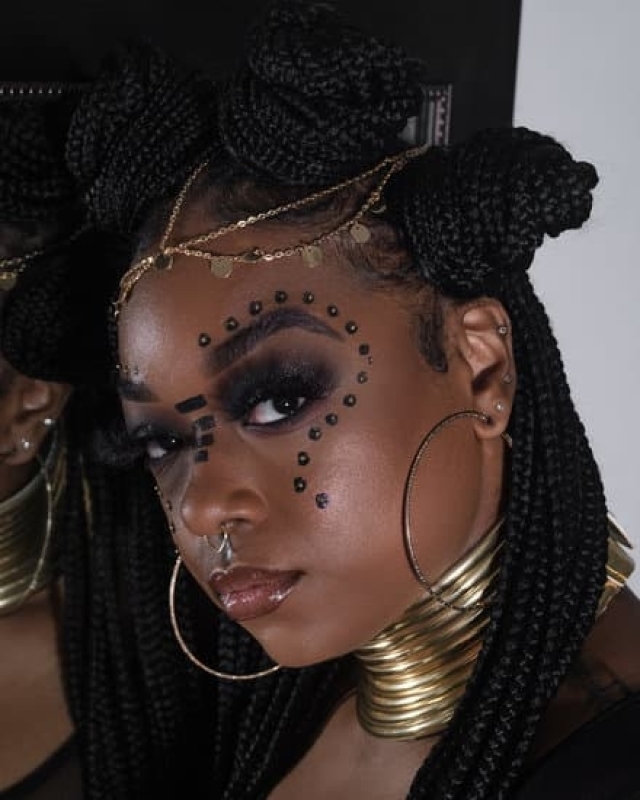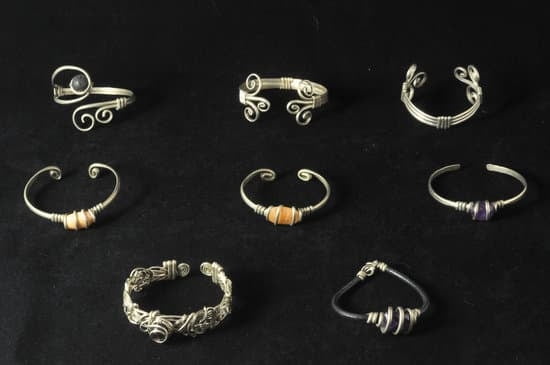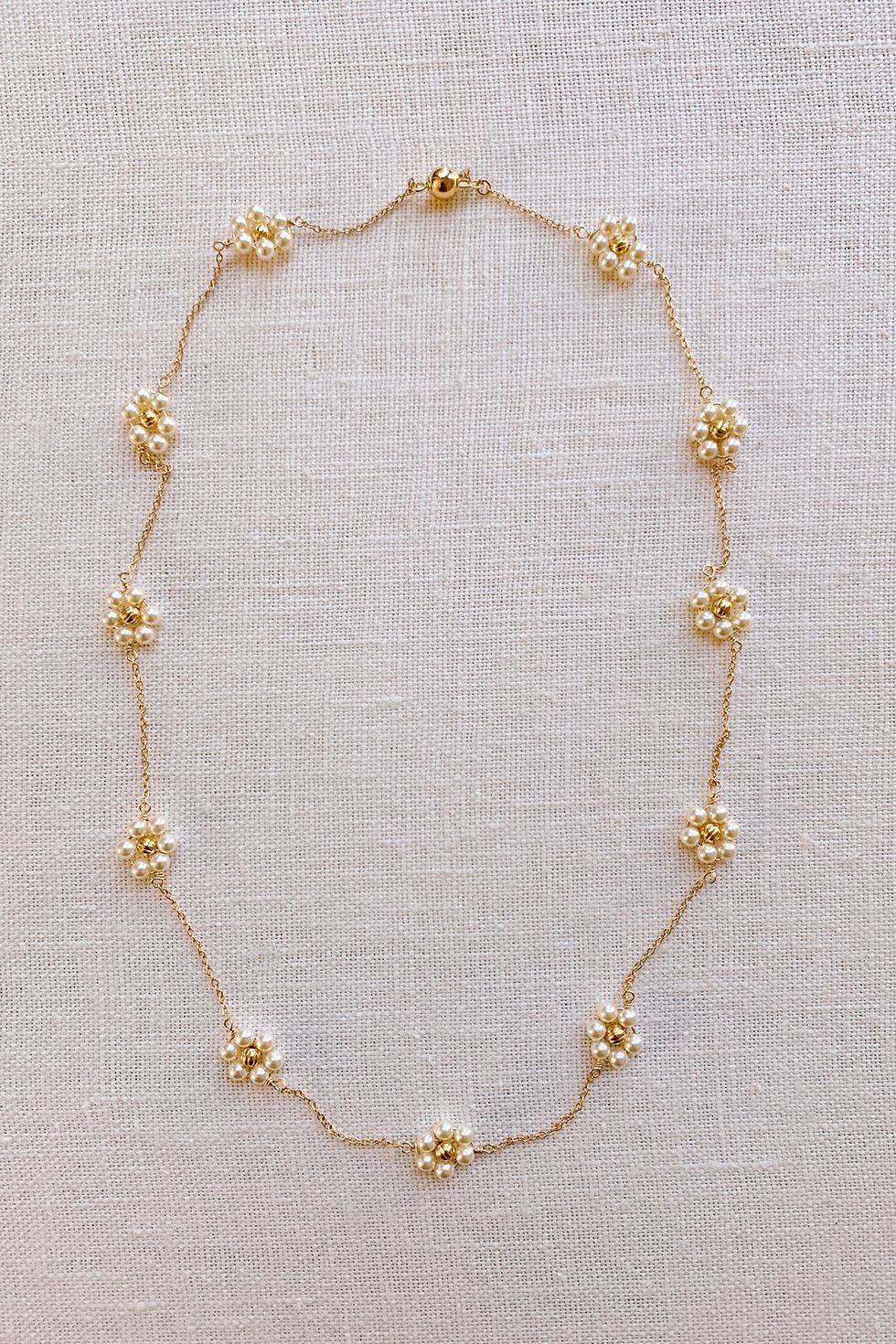Famous jewelry of the world in history has shaped public perception ever since humankind began wearing such items. From ancient coins from Rome, to coveted crowns, to stunning tiaras, the most famous pieces of jewelry have enchanted people all over the world. Such pieces have been handed down for generations and now provide us with a glimpse back into our past. Over time, certain pieces have become symbols of wealth and power that evoke feelings of glamour and sophistication.
The most distinguishable piece of jewelry dates as far back as 4500 BC – the Egyptian ‘Eye of Horus’ talisman which was believed to bring protection to its wearer. This symbol has been found in a variety of cultures from Ancient Greece and Rome to India, China, and Africa and is still used today as an amulet for prosperity, health, and good fortune.
The ancient Egyptians also created decorative adornments such as necklaces carved from semi-precious stones which signified power or were used for rituals. After them came the gold earrings worn by women in Minoan societies (3000 BC) as lucky charms – they were so popular among people at that time that some women had holes on their ear lobes big enough to hold a fingertip through it.
Over centuries famous jewelry has changed shape along with society – going through periods such as Victorian morality with its pearl brooches or romanticism with amethyst headbands and diamond bracelets. However, recently there has been a return to vintage designs with pearls, gold plated chains or even hair clips being passed down from generation to generation – such items often reminiscent of royalty or aristocracy.
Whether it be a simple chain-link necklace or an extravagant statement brooch covered in jewels – these treasured heirlooms are sure to remain timeless treasures generations more will strive for.
Ancient Egypt Jewelry
Ancient Egyptian Jewelry was highly intricate and beautiful, with each piece often having both an aesthetic and spiritual significance. They used gold for many of their pieces, which symbolized the eternal nature of the Pharaohs – a representation of their power and of wealth in the afterlife. Many pieces contained semi-precious stones such as turquoise and lapis lazuli to enhance the jewelry’s beauty.
Symbolic elements featured prominently in jewelry from Egypt-animals, gods, hieroglyphics, and sacred items were regularly incorporated into the designs. One example is the ankh cross – known as ‘the key of life’ – was held by gods to represent immortal life or luck. Commonly worn by royals, it symbolized strength and health.
Additionally, Egyptians wore simple jewelry around their necks as amulets for protection against evil spirits. These amulets were often made out of clay or carved from precious gemstones like carnelian, green feldspar (onx), serpentine or jasper to produce figures resembling animals or birds that held a religious significance in society at that time. Here are some examples:
- The eye-of Horus Necklace: this amulet was believed to endow wisdom on its wearer
- The Scarlet Fish Amulet: this was designed to look like a fish & protect against drowning
- Crocodile Amulet: Worn to protect against crocodiles & other threats in the river
In addition to these symbols, Ancient Egyptians also crafted rings symbolizing wife’s commitment towards her husband but also for social class distinction – depending on materials used and form employed. Furthermore, anklets were hugely popular among women demonstrating their marital status since such jewels could only be worn by married women who had children.
Precious Gemstones in Ancient China
Ancient Chinese had a strong belief in the power of precious gemstones. They believed that wearing stones or jewelry with specific gemstones granted one special powers and protection. A complex system was developed during the Neolithic period involving the use of magiko beliefs to understand gemstones, their meanings and objectives.
The principles behind the Chinese use of gemstones include:
- Luck – Gemstones were thought to bring luck and fortune.
- Protection – Certain stones were thought to protect from all kinds of physical danger.
- Health – Gemstones were believed to improve your health and boost immunity.
- Business success – It was believed certain gems could bring financial success.
Each kind of stone used in ancient China has different beliefs and associated meanings according to an individual’s needs. Some examples are Jade which meant perfection, power, health, long life; agate represented strength; turquoise signified wealth; sapphire represented wisdom; obsidian protection, courage; lapis lazuli friendship and honesty; aquamarine calming effects on stress ; carnelian good luck etc Having these qualities for an individual attracted much social attention as it was its own birthright.
In antiquity, books called ‘astronomy’ containing details about stars were written by famous scholars in China who also mentioned the subject of gemstone in relation to the stars patterns. The materials they wrote in this context came from ancient Egyptian astrologers wherein some symbols associated with certain planets corresponded with certain types of stones.
For example, the Sun sign was associated with diamond while Venus with jade. Turquoise was also highly valued as a protective stone against evil spirits that can cause illness or disturbance in their lives.
The Influence of Indian Jewelry on the World
India has had a rich cultural history throughout the centuries, one that is full of intricate design and detail, seen in all aspects of their art. Jewelry played an intricate role in India’s culture and fashion; representing pride, power, and status among the people. India’s jewelry influence quickly spread across the world often through trade routes during ancient times and introducing:
- Elaborate works of art
- Unique gemstones
- Colorful colors
Even today, India produces some of the most beautiful jewellery in the world – from contemporary designs to traditional pieces. India also houses many gemstone mining sites which contribute to its influence on the world for close to thousands of years. From these India was also credited with introducing materials like gold and silver into jewelry making for the first time.
Egyptian Jewelry – include why their jewelry designs had religious meaning
Egyptian jewelry became iconic symbols during their civilization which spanned over three thousand years ago. Egyptian wealth and position was determined by wearing expensive jewelry sets crafted from metals like gold, bronze and gems like turquoise.
Egyptian royalty placed great importance on ornamental accessories such as headdresses and necklaces as they believed they brought divine power amongst them through protective gods known as ‘amulets’ This type of adornment held magical abilities that repelled evil forces in battle or even brought blessedness from the gods according to their beliefs in deities such as Horus, Isis, Anubis or Ra etc.
In addition to this Egyptians would also wear items made from metals such as copper which associated it with health benefits when placed on parts of their body that were aching or ill. This is similar to how holistic healing is practiced today by many cultures around the world – seeking divine spiritual aid through natural healing herbs or crystals for example.
Chinese Jewelry – what types of items did Chinese women favor
China has always been renowned for crafting intricately detailed pieces of jewelry favored by women over centuries, particularly imperial families due to its extremely wealthy history spanning thousands of years. Gold was a very popular amongst royal families due to its capacity to emit light so elegantly. Hairpins were also considered special pieces within Chinese society – particularly within weddings where hairpins were compared as ‘icons’ between young brides thanks to their creativity in displaying brilliant craftsmanship.
As well as that earrings were widely used by females moreso than males because they added a subtle beauty without being overpowering,whereas men tended lean towards heavier metallic bands as a show symbolise strength and domination during various eras throughout Chinese history.
Lastly decorative ‘hair combs’ maintained it’s popularity among woman who wasn’t able reign throughout different dynasties mostly because it allowed them extra control over styling their hair according various occasionsor outings at particular seasons/times accordingly.
Ancient Greek Jewelry
The jewelry of Ancient Greece ranged from the simple to the elaborate depending on the period of history. During the Minoan era which lasted from about 2700 BC to 1450 BC, jewelry was an important part of their culture and life; men and women often wore intricate pieces made mostly of precious metals such as gold, silver and copper. These pieces usually featured geometric shapes or images of animals like dolphins, mythological creatures and goddesses.
Minoan Style Of Jewelry
In Minoan jewelry design, various semi-precious stones were also used alongside intricate filigree work and granulation techniques. Gold played a particularly important role in Minoan culture due to its ability to refer back to Christianity teachings and emphasize status among the elite classes of society.
Additionally, beads were a common feature in Minoan jewelry crafted out of agate, carnelian, steatite, amber, faience or coral with floral designs being popular motifs as well as spirals and bull figures not only serving decorative purposes but likely also carrying symbolic meaning for believers in ancient gods at that time.
Hellenistic Style Of Jewelry
In comparison to jewelery during the Minoan period, by the Hellenistic Period (323-31 BC) jewelry had become increasingly vast with an array of styles ranging from highly ornate designs featuring gold elements filled with colored stones to simpler necklaces featuring glass beads or clay depictions of deities.
One notable element in Hellenistic Jewelry which departs from earlier styles is its emphasis on elegant simplicity; diadems were decorated with ivy leaves or abstract circular shapes while anklets became thinner but still demonstrated incredible craftsmanship through delicate details like small finest golden chains or tiny gems set into gold settings.
The use of cameo works can also be seen during this period – though these artworks often depict Roman subjects they are thought to have been inspired by Greek mythology instead thus forming a connection between two distinct cultures through their shared love for beautiful decoration.
The Interaction of Ancient Roman Jewelry with Other Cultures
The Roman influence on the world can be seen in many aspects of our modern lifestyles, one of these is jewelry. Rome’s history of international interaction and trade had a considerable influence on the design and manufacture of jewelry.
Roman jewelry was greatly influenced by the global transition period that characterized much of its imperial reign, between 300-500AD. During this epoch of their imperium, the political influence associated with being Roman spread throughout the Mediterranean, as did their artisanship and production techniques.
Many countries travelled to Rome to learn from their exquisite craftsmanship and skillset. Such travelers brought both direct influences like ivory carving and filigree work, as well as indirect influences such as gold working which made its way from India, via Assyria, to Rome; eventually proliferating throughout Europe.
Combination with Great Ancient Civilizations
The combination of cultures via travel meant that materials and styles were exchanged amongst nations like never before. The Romantics adopted turquoise beads, rubies, carnelian beads and several other gemstones from Egypt; pearls from Greece; diadems and earrings with intricate engravings from Assyrian culture; cloisonne enameled glasswork technique from Syria; India contributed garnet jewellery alongside delicate filigree goldworking techniques; Phoenicia boasted rich purple dye for garments as well as particular reeds that manifested themselves in jewelry design.
Continued Interaction Influenced Jewelry Styles
This interaction created an opulent melting pot that resulted in an infinite variety of designs suitable for almost any person or occasion across provincial boundaries because traditions had interconnected so genuinely. For example; fibulas (brooches) were hugely successful throughout all imperial provinces due to the fact they served both aesthetic AND practical purposes due to intricate interlocked clasps which fascinate historians today due to how complex some open/shut mechanisms could be on certain pieces.
Nowadays we look at them simply for beauty’s sake.
European Royalty and Maintenance of Luxury Jewelry in the Middle Ages
European royal families have long been known for their lavish and expensive jewelry. In the Middle Ages, jewelers created elaborate pieces that were unique to the monarchy of each region. Such pieces signified wealth and status, as well as the maintaining of luxury lifestyle among the aristocracy. The Jewelry of this period was ridden with religious symbolism and can be grouped into distinct regions such as France, Italy, Spain, and England (to name a few).
The Anglo-Saxons
During the Anglo-Saxon period in England, much of the jewelry included goldsmithing work which included items such as iron rings or elaborately crafted earrings. A classic example of an Anglo-Saxon piece is the Thetford treasure which is comprised entirely of gold jewelry in various forms – from necklaces to hat pins – that date back to the 8th century AD.
The French Royal Court
In France during this period, some iconic pieces were created for its kings and queens who valued exclusivity in jewelry above all else. An exquisite example is Queen Marie Antoinette’s ‘Regent Diamond Necklace’ which consists of a carefully crafted diamond-studded choker completed with an additional moonlight pearl pendant on either side of a single central diamond.
The Italian Renaissance
The Italian Renaissance yielded many awe-inspiring works of art including one of history’s most famous jewels – the Florentine Diamond which dates back to around 15th century. It’s estimated to be worth $15 billion dollars and its ownership over 500 years has seen it pass through various hands from French royalty to Napoleon Bonaparte until it eventually ended up being returned to Italy where it remains today in a museum.
Its original design exhibits intricate craftsmanship with a total weight 78 carats divided into four equal areas – two triangular surfaces with two diamonds cut into them at perfect angles along with another two trapezoid surfaces containing engravings attributed mostly likely by Leonardo da Vinci himself.
Modern Reinterpretation of Historic Jewelry
Modern jewelers often incorporate classic designs from centuries past in order to create unique pieces. Many have taken inspiration from historic jewelry, reinterpreting and modernizing traditional styles. Great pains are taken to recreate the look and feel of ancient pieces with painstaking attention to detail.
- One example is the rebirth of the Victorian era in contemporary home décor, fashion accessories and jewelry
- jewelry inspired by 19th century empires such as Imperial Russia, Ottoman Turkey or the Austro-Hungarian monarchy
- Art Nouveau also made a huge impact on modern jewelry; we can see its influence in many classic designs used today
From ancient Etruscan Earspirals to Byzantine necklace settings, classic motifs from time periods long past remain popular among modern jewelers. The Middle Ages are especially inspiring for those who seek a timeless symbol of nobility – crown insignia of power will never go out of style.
Other historical symbols being used include Chinese jade Bangles, Celtic Knots, Lotus flowers and Egyptian Scarabs. Even more recently, retro 1950’s pin-up girls are being represented through carefully crafted charms that celebrate the glamour of that golden era.
- Romantic heart shapes continue to appear in jewelry collections
- Milgrain work is a technique wherein very small metal beads are arranged along the edges of some gold or silver surface ornamentations
- Filigree work, the art of mixing fine wire with small precious metal beads is an age-old tradition often seen in period-inspired jewelry designs.
The beauty of history Jewelry lies in its agelessness – it conveys a sense of connection across cultures and time periods. Goldsmiths and skillful craftspeople have been able to retain these beautiful styles while still adding their own unique touches. Ultimately, this type of historically inspired art allows us all to carry timeless elegance with us wherever we go – reminding us that no matter what our individual backgrounds may be; we all share a common history.
Conclusion and Reflection on the Rich History of Jewelry in the World
The history of jewelry in the world is rich and ancient. Jewelry has been used as currency, a sign of wealth and power, an expression of aesthetic taste, and in many cases to convey spiritual beliefs. It is hard to overstate the impact that jewelry has had on cultures across the globe for thousands of years.
From primitive necklaces made from stones or animal teeth to modern pieces crafted from precious metals and gemstones, jewelry has been a part of some of the most influential societies throughout history. Through its long history, jewelry-making has evolved with advances in technology creating complex designs that would have been impossible to achieve during ancient times.
Jewelry continues to be a popular accessory today, with pieces ranging from simple body piercings such as rings or necklaces to more elaborate custom engagement rings featuring rare gems or custom engravings. The use of symbols in jewelry often holds special meaning; there are few items as personal as a piece of jewelry that contains a sentimental message for its recipient or wearer.
People also look towards vintage or antique pieces to acquire certain qualities or distinct styles that cannot be found in modern pieces. This is partly due to the fact that many ancient techniques developed during the golden age of luxury can no longer be recreated in contemporary materials.
The impact of jewelery on our culture remains strong even 2000 years after its first appearance. Jewelry allows us to express who we are outwardly through ornamental aesthetics while helping us appreciate how those before us lived through ancient artifacts such as Viking bracelets or Aztec earrings.
By exploring the vast array of jewelry available both now and throughout history, it is possible to appreciate not only how they represent style but also how they served humanity’s needs by symbolizing marriage, religion and wealth throughout time periods around the world.

Welcome to my jewelry blog! My name is Sarah and I am the owner of this blog.
I love making jewelry and sharing my creations with others.
So whether you’re someone who loves wearing jewelry yourself or simply enjoys learning about it, be sure to check out my blog for insightful posts on everything related to this exciting topic!





